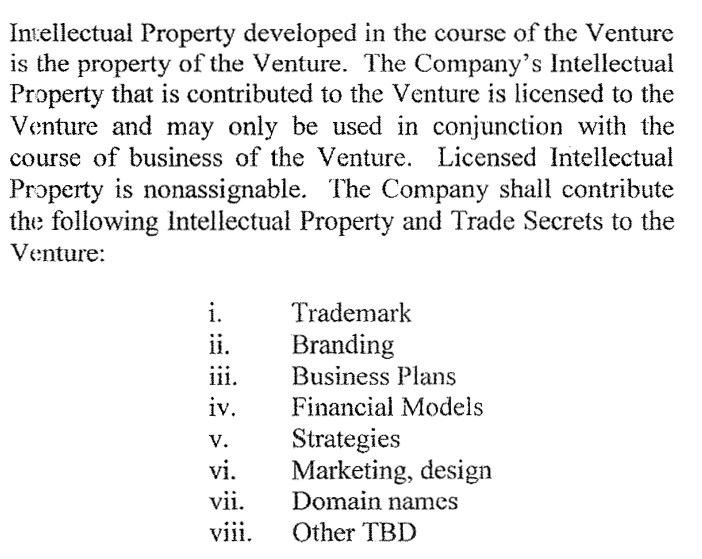This is a bit of a “duh” case from the Federal Circuit, a nonprecedential decision. The only surprising part of it is that the trial court, Judge Sparks in the Western District of Texas, didn’t impose even greater sanctions. It was quite a show of generosity.
The patent-in-suit has a short chain of title; from the inventor to Wildcat Services, L.P. and from Wildcat Services to MD/Totco, a division of Varco, L.P. The plaintiff is National Oilwell Varco, L.P. (NOV). Varco, L.P. and NOV are sister subsidiaries. NOV claimed that it acquire the patent from Varco, L.P. in an Asset Contribution Agreement (ACA). NOV sued defendant Omron Oilfield & Marine, Inc.
NOV stated in its interrogatory answers that “Documents sufficient to substantiate these transactions will be produced including asset purchase agreements and assignment documents.” But NOV didn’t produce the ACA and instead produced only an “Assistant Secretary Certificate.” NOV said about the ACA:
The document is not relevant to any claim or defense this lawsuit. The Secretary’s Certificate shows that all assets of Varco, L.P. were sold to National Oilwell including the ‘142 Patent. The Asset Contribution Agreement would be cumulative and is not needed.
Omron therefore filed a motion to dismiss, stating that NOV refused to produce the ACA, the Assistant Secretary’s Certificate did not establish standing, and that Varco L.P. claimed to own the patent in prior litigation. In response NOV produced the ACA, unfortunately for us under seal. Omron then re-filed its motion to dismiss, this time on the theory that the ACA did not effect a transfer.
The ACA said this, as quoted by the court:
WHEREAS, Contributor desires to contribute all of its physical assets, including but not limited to those assets generally described in Exhibit A (the “Property”), excluding any capital or common stock of subsidiaries or owned companies.
.…
1.1 Agreement to Contribute Property and Issue Partnership Interest. For and in consideration of the mutual benefits enjoyed by one another under this Agreement, Contributor agrees to transfer and convey or assign all of Contributor’s right, title, and interest in and to the Property to Partnership, and Partnership agrees to accept the contribution and conveyance of the Property and, in exchange therefore, to issue a limited partnership interest in Partnership to the Contributor, pursuant to the terms and conditions set forth in this Agreement.
1.2 Conveyance of the Property. Concurrently with the execution of this Agreement, Contributor shall convey, assign, and transfer the Property to Partnership, subject only to the liens, encumbrances, security interests, restrictions, and claims of public record or referenced on Exhibit A. Contributor shall execute and deliver any and all documents or instruments as may be required, or which may be reasonably requested, by Partnership in order to effect and memorialize such conveyance, assignment, and transfer.
The only reference to patents was in Exhibit A. A line for “Patents” on a page listing various divisions had “0” listed for every division except for ” Varco LP Brandt” (recall the assignment of the patent was to the division MD/Totco), where the entry was “129,647.”
The Federal Circuit affirmed the district court on the last of the district court’s three theories that the ACA didn’t assign the ‘142 Patent. The affirmed theory was that the ‘142 Patent was plainly not mentioned anywhere in the ACA, “the Exhibit A spreadsheet shows a ‘0’ where the patent row intersects with the MD/Totco column.”
The district court’s first theory was the toublesome language “agrees to transfer and convey” and “shall convey, assign and transfer.” You should know by now that the Federal Circuit has stated that this is language of future assignment, a promise to assign, not language that effects a present assignment. I find it interesting, though, that the Federal Circuit did not affirm on this basis; in the past Judges Newman and O’Malley have criticized the application of this rule in an asset purchase agreement case when it had only before been applied in employment agreement cases.
The district court’s second theory was that the ACA expressly transferred only physical assets, not intangible assets, even though they were listed on Exhibit A. Here’s the reasoning:
NOV asserts the ACA defines “Patents” as physical assets because “Patents appears as an entry on Exhibit A. Following this logic, everything listed in Exhibit A is a physical asset. But this cannot be the case because Exhibit A includes entries which are even more obviously non-physical assets than a patent. For instance, Exhibit A includes “goodwill” as well as items that are not even assets at all, such as amortizations, a long list of liabilities, and taxes. See the ACA, Ex. A. The most coherent reading of the ACA is that Varco, L.P. intended to transfer all of the Property to NOV, and the Property is the physical assets listed in Exhibit A, not everything in Exhibit A or all assets in Exhibit A. The Court agrees with Omron that a patent is not a physical asset.
While Omron’s sources are not directly on point in that they derive from securities law and public utilities law, respectively, they generally indicate a difference between a physical asset and an intangible, non-physical asset. A patent would fall under the latter definition. Moreover, NOV’s position is untenable and makes no serious attempt to define “physical asset,” instead effectively reading the word “physical” out of the ACA entirely.
The district court unusually dismissed the case with prejudice, also affirmed by the appeals court (emphasis and brackets mine):
The district court dismissed this case with prejudice because NOV did not present a consistent picture of ownership of the ’142 Patent throughout (1) the USPTO records, (2) this case, and (3) three separate previous litigations including a case against Pason Systems USA Corp. (the Pason case), a case in Canada (the Canadian case), and a case against Auto-Dril (the Auto-Dril case). In the Pason case and the Canadian case, Varco, L.P. alleged that it owned the ’142 Patent or the Canadian counterpart to the ’142 patent, even after the execution of the ACA, and in the Auto-Dril case, NOV settled when Auto-Dril presented the same lack of standing argument that Omron raises here. We affirm because we find no abuse of discretion in the district court’s analysis.
The district court provided several examples of NOV’s behavior evidencing a pattern of highly questionable conduct. We agree with the district court that even if NOV had been confused about the ownership of the ’142 Patent, NOV was put on notice about its potential lack of standing in October 2011, when Auto-Dril filed a motion to dismiss in the Auto-Dril case for lack of standing. In the Auto-Dril case, NOV also initially relied on the Assistant Secretary’s Certificate, and NOV settled with Auto-Dril after Auto-Dril responded with the same lack of standing argument advanced by Omron here. Yet nine months after settling with Auto-Dril, NOV filed this case against Omron, without fixing the problem of a lack of written assignment of the ’142 Patent from Varco, L.P. to NOV. NOV made numerous conflicting representations in this case, including stating that the ACA was not relevant to any claim or defense in this case, or that it was cumulative and not needed, yet NOV now relies on the ACA as the purported assignment document. Even NOV’s Rule 30(b)(6) designee did not know whether Exhibit A to the ACA covered the ’142 Patent. We agree that NOV was aware of the “web of confusion it was weaving” as early as October 2011, more than nine months before it filed this case, yet it failed to “fill[] the void that has now consumed this matter: the absence of a written assignment, as required by law, of the ’142 Patent from Varco, L.P. to NOV.” [Dist. Ct. opinion.] Had NOV been able to fix the standing problem, “it would have done so a long time ago and certainly before August 2012,” and it “at no point … even made an attempt to explain the blatant inconsistencies” in its previous positions on standing. [Id.] We agree and find no abuse of discretion because the district court’s decision to dismiss this case with prejudice was not clearly unreasonable, arbitrary, or fanciful, or based on an erroneous conclusion of law or fact.
The most surprising part of the case to me was that the district court imposed, and the appeals court affirmed, sanctions only from the date that NOV refused to produce the ACA. Given that NOV was fully aware of its chain of title problem well before it filed its lawsuit, it looks to me like the district court was quite generous. Here is the reason given:
The Court agrees NOV was on notice of the standing issue prior to filing suit given the Auto-Dril Case. Yet while the Court could speculate as to why NOV declined to correct any standing issues it had, the reality is the Court does not know the extent to which NOV was aware of the deficiencies in the paperwork supposedly evidencing the transfer of the ‘142 Patent from Varco, L.P. to NOV prior to filing this lawsuit. In the Auto-Dril Case, NOV only produced the Assistant Secretary’s Certificate, and the ACA was not produced. The Court does not know why it was not produced nor did the presiding court have an opportunity to rule on Auto-Dril’s motion to dismiss. Giving NOV the benefit of the doubt on this point, the Court can see why it was reasonable for NOV to believe it could file a lawsuit as the owner of the ‘142 Patent considering it settled the lawsuit with Auto-Dril as the owner of the ‘142 Patent.
.…
The case, however, became exceptional when, through the course of discovery, NOV intentionally withheld the ACA.… That refusal to produce the ACA was exceptionally unreasonable.
The distict court’s explanation of why it was so exceptional, pp. 9-11, is recommended reading.
It looks like even Texas is getting tired of unsupportable lawsuits.
National Oilwell Varco, L.P. v. Omron Oilfield & Marine, Inc., No. 2015-1406 (Fed. Cir. Jan. 25, 2017).
National Oilwell Varco, L.P. v. Omron Oilfield & Marine, Inc., No. A-12-CA-773-SS (W.D. Tex. Feb. 17, 2015) (order dismissing case on standing grounds).
National Oilwell Varco, L.P. v. Omron Oilfield & Marine, Inc., No. A-12-CA-773-SS (W.D. Tex. Aug. 28, 2015) (order on attorney’s fees).

This work is licensed under a Creative Commons Attribution-NoDerivatives 4.0 International License.








 I am pleased to be speaking in San Francisco next week, December 21, at the Practicing Law Institute’s CLE on open source software “
I am pleased to be speaking in San Francisco next week, December 21, at the Practicing Law Institute’s CLE on open source software “